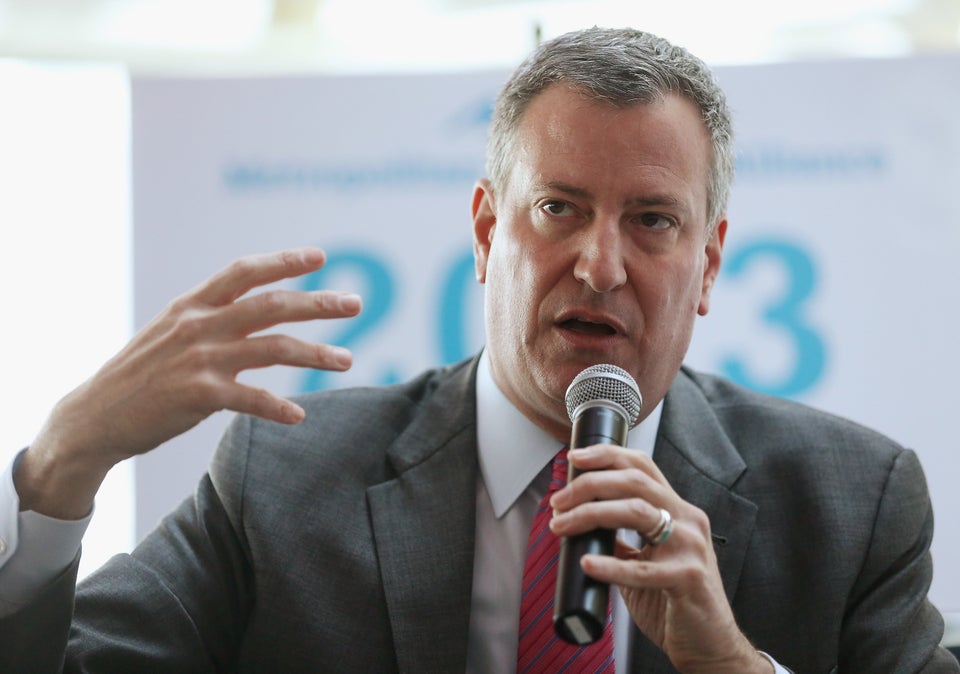
The final round of polls in New York City's mayoral race confirm a dominant front runner in Public Advocate Bill de Blasio but leave much uncertainty about the outcome of Tuesday's Democratic primary election.
The final polls show de Blasio close to but still short of 40 percent, the threshold necessary to avoid a run-off. And though two of the three final surveys show former city Comptroller Bill Thompson nudging ahead of City Council Speaker Christine Quinn for second place, the order of finish is far from certain.
The final polls also show a close and uncertain contest between the two Democrats in the race for city comptroller, which has received national attention due to the candidacy of former Gov. Eliot Spitzer. The polls are split on the leader, though trends appear to favor Manhattan Borough President Scott Stringer.
A final Quinnipiac University poll, released Monday morning, put de Blasio at 39 percent in the mayoral race, followed Thompson at 25 percent and Quinn at 18 percent. Eight percent of voters remained undecided.
An NBC 4 New York/Wall Street Journal/Marist Poll released Sunday evening gave de Blasio 36 percent, with Quinn and Thompson tied for second place at 20 percent.
A third survey, by the Democratic firm Public Policy Polling, showed de Blasio at a similar 38 percent, with Thompson at 19 percent and Quinn at 13 percent. Unlike the Quinnipiac and Marist polls, PPP used an automated, recorded voice methodology whose sample missed New Yorkers without landline telephones.
The HuffPost Pollster chart, which combines all of the public polls into combined trend lines for each candidate, currently shows de Blasio leading with 38.3 percent, followed by 21.4 percent for Thompson and 17 percent for Quinn.
Anthony Weiner, who briefly achieved something close to frontrunner status before the revelation of new scandals, was an afterthought in all three polls, taking between 6 and 9 percent. City Comptroller John Liu, former City Council member Sal Albanese and pastor Erick Salgado each received well below 10 percent.
The polling shows de Blasio strongest among his ideological base of self-identified liberals, 40 percent of whom supported him. He is also ahead, though, among virtually all demographics, including some his opponents had hoped to win. In the Marist poll, he was 14 points ahead of Thompson among African-American voters, and 13 points ahead of Quinn among women. In the Quinnipiac poll, he was 10 points ahead of Thompson among African-Americans, and led both Quinn and Thompson among women.
If the polls are collectively accurate, De Blasio appears poised to finish above the 40 percent threshold, since his support has been surging and since the combined trends leave roughly roughly 9 percent undecided. If the undecided respondents split their votes in the same proportion as those who have already picked a candidate, de Blasio would receive 42 percent of the vote.
Polling faces a greater degree of difficulty in the New York City primary, however, because turnout is typically low and hard to predict and survey response rates are lower than elsewhere in the nation. Historically, as reported by the Guardian's Harry Enten, the final polls often exhibit errors large enough to leave real uncertainty about whether de Blasio will be able to avoid a runoff.
In particular, Enten found, "the final primary polls have consistently undervalued the minority candidate," in prior races for mayor. That history, along with a modest upward trend in recent weeks, suggests further gains for Thompson, although the fact that de Blasio appears to lead among black voters may muddle the historical pattern.
Polling on the Democratic city comptroller’s race is even less definitive. In the Marist poll, Stringer took 47 percent to Spitzer’s 45 percent. PPP found roughly similar numbers, with Spitzer edging out Stringer, 45 percent to 41 percent. In the Quinnipiac survey, however, Stringer had a 7-point lead, with 50 percent to Spitzer’s 43 percent.
HuffPollster’s average, which includes all publicly available polling, gives a slight advantage to Stringer, whose support has risen to an average of near 46 percent, from under 40 percent earlier in August.
